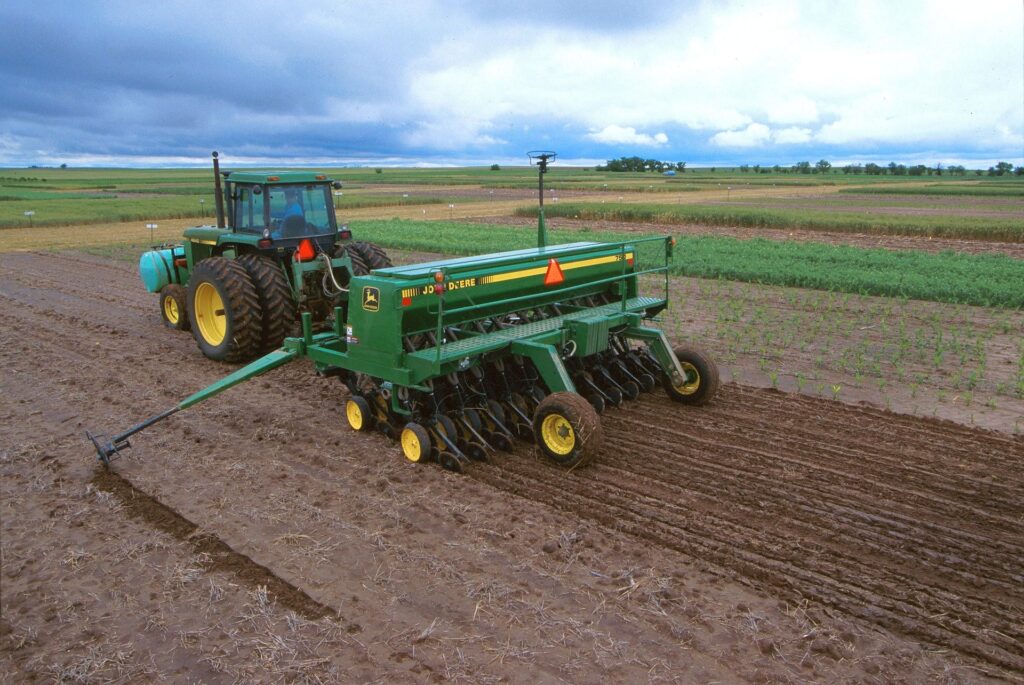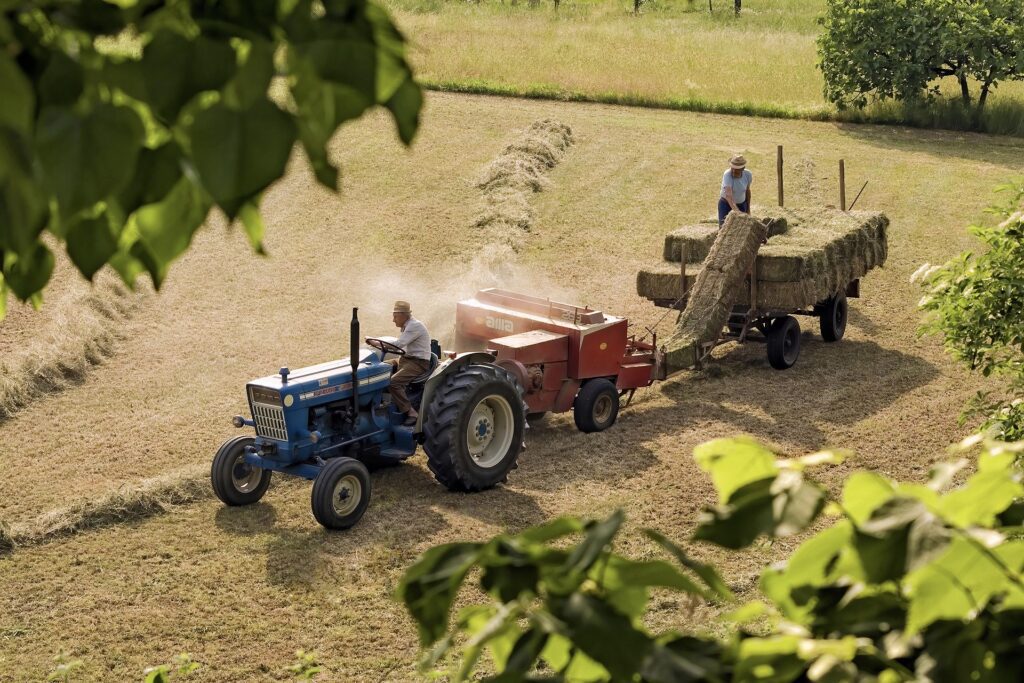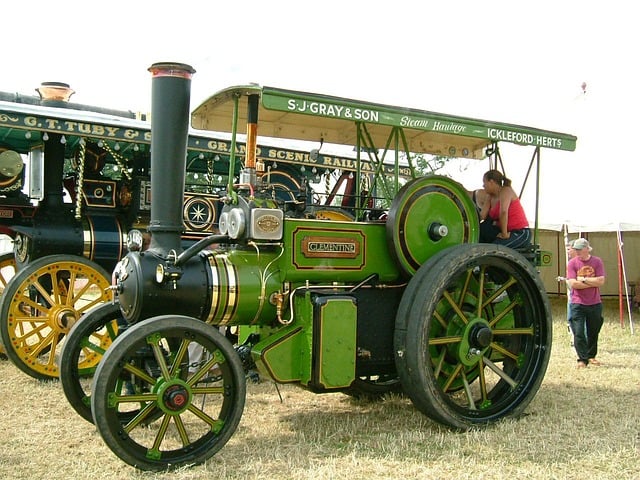Table of Contents
I. Introduction
Tractors and machinery Organic farming is more than just a trend; it’s a conscious shift towards sustainable agriculture that prioritizes environmental health, biodiversity, and human well-being. In a world increasingly aware of the impacts of conventional farming practices, organic methods offer a compelling alternative, promising healthier food, enriched soils, and a reduced carbon footprint. Tractors and machinery
However, the transition to organic farming is not without its challenges. It requires a deep understanding of ecological principles, innovative techniques, and the right tools to navigate the complexities of crop production without synthetic inputs.One of the most critical components of modern organic farming is the intelligent use of machinery.Tractors and machinery
While some may perceive organic farming as solely reliant on traditional, manual labor, the reality is that machinery plays a vital role in enhancing efficiency, improving yields, and ensuring the sustainability of organic operations. From soil preparation to harvesting, the right machinery can significantly reduce labor costs, increase productivity, and minimize environmental impact.This blog aims to explore how tractors and machinery are instrumental in achieving personal and professional success in organic farming.Tractors and machinery
We will delve into the evolution of farming equipment, the types of machinery used in organic farming, the advantages of their use, the role of precision technology, the impact on sustainability, guidance on selecting the right machinery, and the challenges and solutions associated with their adoption. Ultimately, we will demonstrate how the strategic integration of machinery can transform organic farming into a viable, profitable, and fulfilling career path.Tractors and machinery

II. The Evolution of Farming Equipment
To fully appreciate the role of machinery in modern organic farming, it is essential to understand the evolution of farming equipment over time. Traditional farming methods relied heavily on manual labor and animal power. Farmers tilled the soil with hand tools, sowed seeds by hand, and harvested crops manually. These methods, while sustainable in certain contexts, were labor-intensive, time-consuming, and often yielded limited output.As technology advanced, farming practices began to transform. Tractors and machinery
The introduction of tractors and other mechanized equipment in the 20th century revolutionized agriculture. These machines allowed farmers to cultivate larger areas of land more efficiently, leading to increased yields and reduced labor costs. However, many of these early machines were designed for conventional farming systems, which relied heavily on synthetic fertilizers and pesticides.Tractors and machinery
The rise of organic farming in recent decades has spurred the development of machinery specifically tailored to the needs of organic agriculture. This new generation of equipment is designed to minimize soil disturbance, reduce the use of fossil fuels, and support biodiversity. Tractors and machinery
It includes specialized tillage equipment, precision planters, efficient irrigation systems, and advanced harvesting machines.One of the most significant shifts in modern organic farming is the adoption of conservation tillage practices. Traditional tillage methods involve plowing and harrowing the soil, which can lead to soil erosion, loss of organic matter, and reduced water infiltration.Tractors and machinery
Conservation tillage, on the other hand, aims to minimize soil disturbance through techniques such as no-till planting, cover cropping, and reduced tillage. Specialized machinery, such as no-till drills and conservation tillage implements, plays a crucial role in implementing these practices effectively.Tractors and machinery


III. Types of Machinery Used in Organic Farming
Organic farming employs a wide array of machinery, each designed to perform specific tasks while adhering to organic principles. Here are some of the most essential types of machinery used in organic farming:Tractors and machinery
- Tractors: Tractors are the workhorses of any farm, providing the power to pull implements, transport materials, and perform a variety of other tasks. In organic farming, tractors are used for plowing, planting, cultivating, and harvesting. The increasing popularity of electric tractors is noteworthy due to their low emissions and potential for cost savings. Electric tractors offer a cleaner, quieter alternative to traditional diesel-powered machines, aligning with the environmental goals of organic farming.
- Tillage Equipment: Tillage equipment is used to prepare the soil for planting. In organic farming, the goal is to minimize soil disturbance while creating a favorable seedbed. Common types of tillage equipment include:
- Cultivators: Used to loosen and aerate the soil, control weeds, and incorporate organic matter.
- Harrows: Used to break up soil clods, level the soil surface, and prepare a fine seedbed.
- No-Till Drills: Used to plant seeds directly into undisturbed soil, minimizing erosion and preserving soil moisture.
- Seeders and Planters: Seeders and planters are used to sow seeds at the correct depth and spacing. Precision planters are particularly valuable in organic farming, as they ensure even seed distribution and optimal plant density, leading to higher yields and reduced weed competition.
- Irrigation Systems: Efficient irrigation is essential for successful organic farming, especially in regions with limited rainfall. Common types of irrigation systems include:
- Drip Irrigation: Delivers water directly to the plant roots, minimizing water waste and reducing the risk of foliar diseases.
- Sprinkler Irrigation: Distributes water over the crop canopy, providing uniform coverage.
- Micro-Sprinklers: Combine the benefits of drip and sprinkler irrigation, delivering water to the plant roots while also providing some foliar wetting.
- Harvesting Equipment: Harvesting equipment is used to gather crops efficiently and minimize post-harvest losses. The type of harvesting equipment used depends on the crop being grown. For example, combine harvesters are used to harvest grains, while specialized fruit pickers are used to harvest fruits and vegetables.
- Weed Control Machinery: Weed control is a major challenge in organic farming, as synthetic herbicides are prohibited. Fortunately, several types of machinery can be used to manage weeds effectively:
- Mulchers: Cover the soil surface with organic materials, suppressing weed growth and conserving soil moisture.
- Flame Weeders: Use intense heat to kill weeds without damaging the crop.
- Mechanical Weeders: Use rotating tines or blades to uproot weeds.
- Pest Control Machinery: Pest control is another challenge in organic farming, as synthetic pesticides are not allowed. However, several types of machinery can be used to protect crops from pests without harming beneficial insects or the environment:
- Pheromone Traps: Attract and trap insect pests, reducing their populations.
- Insect Vacuums: Suck up insect pests from the crop canopy.
- Row Covers: Protect crops from pests and diseases.
IV. Advantages of Using Machinery in Organic Farming
The use of machinery in organic farming offers numerous advantages, including:
- Increased Efficiency: Machinery can perform tasks much faster and more efficiently than manual labor. This allows farmers to cultivate larger areas of land, plant more crops, and harvest more produce.
- Improved Productivity: By automating many of the tasks involved in organic farming, machinery can significantly increase productivity. This leads to higher yields, better crop quality, and improved profitability.Tractors and machinery
- Reduced Physical Strain: Organic farming can be physically demanding, especially when relying on manual labor. Machinery can reduce the physical strain on farmers and farmworkers, making the work more manageable and sustainable.
- Higher Yields and Better Crop Quality: By optimizing planting, irrigation, and harvesting, machinery can help farmers achieve higher yields and better crop quality. This is particularly important in organic farming, where synthetic inputs are not used to compensate for inefficiencies.Tractors and machinery
- Multi-purpose Tools: Some tools such as comb harrows can be used for multiple purposes like weed removal and breaking of capped soil. This versatility reduces the need for multiple specialized machines, saving money and space.Tractors and machinery


V. Precision and Technology in Organic Farming
Precision agriculture involves the use of technology to optimize farming practices and reduce waste. In organic farming, precision technology can be used to:Tractors and machinery
- GPS-Guided Tractors: GPS-guided tractors can precisely navigate fields, ensuring accurate planting, cultivation, and harvesting. This reduces overlap, minimizes soil compaction, and optimizes resource use.Tractors and machinery
- Data Collection Systems: Data collection systems can monitor soil moisture, nutrient levels, and crop health. This information can be used to make informed decisions about irrigation, fertilization, and pest control, leading to more efficient and sustainable farming practices.Tractors and machinery
- Variable Rate Application: Variable rate application technology allows farmers to apply inputs, such as compost and cover crop seed, at varying rates across the field. This ensures that each area of the field receives the optimal amount of inputs, maximizing productivity and minimizing waste.Tractors and machinery
These technologies are vital for adhering to organic certification standards, which require meticulous record-keeping and adherence to specific practices. Precision technology simplifies compliance by providing accurate data and documentation, making it easier for farmers to demonstrate their commitment to organic principles.Tractors and machinery
VI. Sustainable Practices and Environmental Impact
One of the primary goals of organic farming is to minimize environmental impact. Machinery can play a crucial role in achieving this goal by:
- Energy-Efficient Motors: Energy-efficient motors reduce the consumption of fossil fuels, lowering greenhouse gas emissions and reducing the carbon footprint of organic farming operations.Tractors and machinery
- Renewable Power Solutions: Renewable power solutions, such as solar panels and wind turbines, can be used to power farm machinery, further reducing reliance on fossil fuels.Tractors and machinery
- Composting and Recycling Organic Waste: Machinery can be used to compost and recycle organic waste, turning it into valuable soil amendments. This reduces waste disposal costs, improves soil fertility, and reduces the need for synthetic fertilizers.Tractors and machinery


VII. Choosing the Right Machinery
Selecting the right machinery is crucial for success in organic farming. Here are some factors to consider:
- Farm Size and Type: The size and type of farm will determine the types of machinery needed. A small-scale vegetable farm will require different machinery than a large-scale grain farm.
- Soil Type: The soil type will influence the type of tillage equipment needed. For example, heavy clay soils may require more aggressive tillage than sandy soils.
- Crops Grown: The crops grown will determine the types of planting, harvesting, and pest control machinery needed.
- Budget: The budget will limit the types of machinery that can be purchased. Consider purchasing used equipment or leasing machinery to reduce upfront costs.
- Fuel Efficiency and Environmental Friendliness: When choosing tractors, prioritize fuel efficiency and environmental friendliness. Look for tractors with low emissions and consider electric or hybrid models.
- Supplier Networks: Ensure access to quality equipment through reliable supplier networks. A good supplier will provide maintenance, spare parts, and technical support.
VIII. Personal and Professional Success through Machinery
Efficient machinery contributes to the personal well-being of farmers by reducing physical strain and workload. This allows farmers to focus on other aspects of their business, such as marketing, sales, and customer service. Increased productivity and higher yields lead to professional success and profitability, making organic farming a viable and rewarding career path.Consider the example of a small-scale organic vegetable farmer who invested in a precision planter.Tractors and machinery
By ensuring even seed distribution and optimal plant density, the farmer was able to significantly increase yields and reduce weed competition. This led to higher sales, improved profitability, and a more sustainable farming operation.Or take the case of a large-scale organic grain farmer who implemented GPS-guided tractors. By precisely navigating fields, the farmer was able to reduce overlap, minimize soil compaction, and optimize resource use. This led to lower input costs, higher yields, and a more environmentally friendly farming operation.Tractors and machinery
IX. Challenges and Solutions
While the benefits of using machinery in organic farming are clear, there are also some challenges to consider:


- Initial Investment Costs: The initial investment in machinery can be significant. To address this challenge, consider:
- Exploring Used Equipment: Used machinery can be a more affordable option than new equipment.
- Leasing Machinery: Leasing machinery can reduce upfront costs and allow farmers to access the latest technology.
- Government Grants and Subsidies: Many governments offer grants and subsidies to support the purchase of agricultural machinery.
- Maintenance: Machinery requires regular maintenance to ensure optimal performance and longevity. To address this challenge:
- Invest in Durable, High-Quality Machinery: High-quality machinery is less likely to break down and will require less maintenance.
- Establish a Preventative Maintenance Program: Regular maintenance can prevent costly repairs and extend the life of the machinery.
- Train Farmworkers in Basic Maintenance Procedures: Training farmworkers in basic maintenance procedures can reduce the need for expensive repairs.
X. Conclusion
In conclusion, machinery is an essential component of modern organic farming. It enhances efficiency, improves productivity, reduces physical strain, and minimizes environmental impact. By embracing technology and innovation, organic farmers can achieve personal and professional success, creating a more sustainable and resilient agricultural system.The key points to remember include:
- Machinery plays a vital role in enhancing efficiency, improving yields, and ensuring the sustainability of organic operations.
- The right machinery can significantly reduce labor costs, increase productivity, and minimize environmental impact.
- Precision technology, such as GPS-guided tractors and data collection systems, can optimize farming practices and reduce waste.
- Choosing the right machinery is crucial for success in organic farming. Consider farm size, soil type, crops grown, budget, fuel efficiency, and supplier networks.
- Challenges such as initial investment costs and maintenance can be addressed through strategies such as exploring used equipment, leasing machinery, and establishing a preventative maintenance program.
Ultimately, the strategic integration of machinery can transform organic farming into a viable, profitable, and fulfilling career path, contributing to a healthier planet and a more sustainable futur